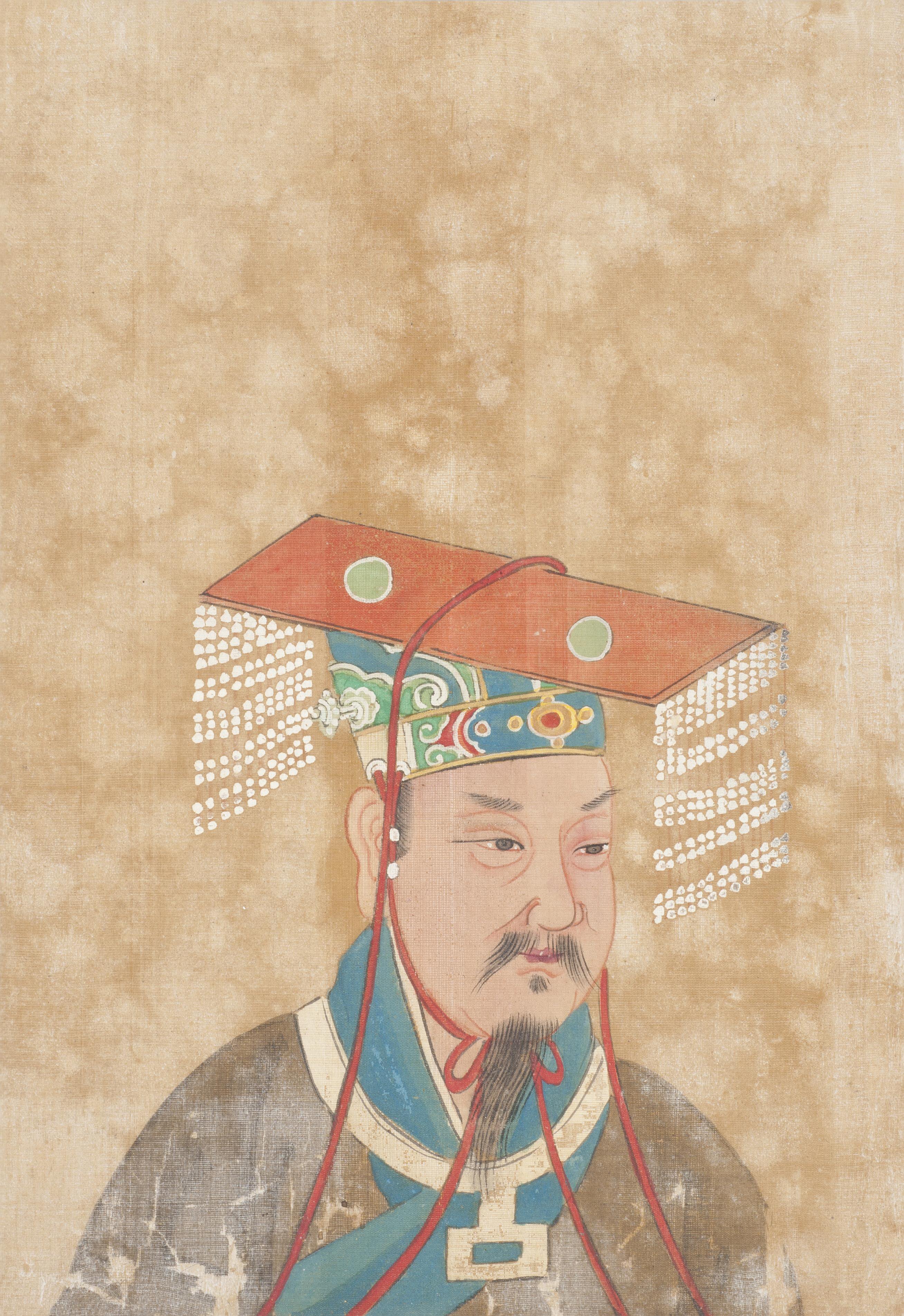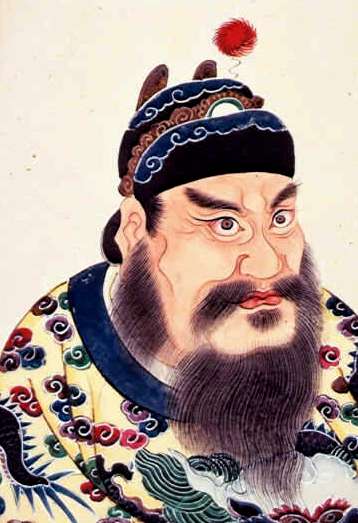|
Ding (vessel)
''Ding'' ( zh, s=鼎, p=dǐng) are prehistoric China, prehistoric and ancient China, ancient Chinese cauldrons standing upon legs with a lid and two fancy facing handles. They are one of the most important shapes used in Chinese ritual bronzes. They were made in two shapes: round vessels with three legs and rectangular ones with four, the latter often called ''fāng dǐng'' ( zh, s=方鼎, l=square ding). They were cookware, used for cooking, storage, and animal sacrifice, ritual offerings to the Chinese mythology, gods or to ancestor veneration in China, ancestors. The earliest recovered examples are ceramic tripods from the Neolithic Peiligang culture, Peiligang culture, but they are better known from the Chinese Bronze Age, particularly after the Zhou dynasty, Zhou deemphasized the ritual use of ''huangjiu'' alcohol practiced by the list of Shang emperors, Shang kings. Under the Zhou, the ding and the privilege to perform the associated rituals became symbols of authority. ... [...More Info...] [...Related Items...] OR: [Wikipedia] [Google] [Baidu] [Amazon] |
Ding Ware
Ding ware, Ting ware () or Dingyao are Chinese ceramics, mostly porcelain, that were produced in the prefecture of Dingzhou ( formerly romanized as "Ting-chou") in Hebei in northern China. The main kilns were at Jiancicun or Jianci in Quyang County. They were produced between the Tang and Yuan dynasties of imperial China, though their finest period was in the 11th century, under the Northern Song. The kilns "were in almost constant operation from the early eighth until the mid-fourteenth century." The most characteristic wares are thin porcelains with a white or greyish body and a nearly transparent white-tinted glaze, though they are classed as stoneware by some. Chemical analysis has shown that they were often made entirely of a kaolinitic clay without any petuntse or "porcelain stone". They are mostly decorated with uncoloured designs that are incised or in very shallow relief. Ding ware was the most famous northern Chinese white ware under the Song, although there ... [...More Info...] [...Related Items...] OR: [Wikipedia] [Google] [Baidu] [Amazon] |
Chinese Nobility
The nobility of China represented the upper strata of aristocracy in premodern China, acting as the ruling class until , and remaining a significant feature of the traditional social structure until the end of the imperial period. The concepts of hereditary sovereignty, peerage titles, and noble families existed as early as the semi-mythical and early historical periods, but the systems of enfeoffment and establishment only developed in the Zhou dynasty, by the end of which a clear delineation of ranks had emerged. This process was a function of the interface between the ancient patriarchal clan system, an increasingly sophisticated apparatus of state, and an evolving geopolitical situation. In the subsequent millennia, this system retained its essential character, albeit with modifications in titles and their relative rankings, and fluctuating power dynamics between the great families, the imperial house, the ministerial and mercantile classes, and other stakeholders in t ... [...More Info...] [...Related Items...] OR: [Wikipedia] [Google] [Baidu] [Amazon] |
King Wu Of Zhou
King Wu of Zhou (; died ), personal name Ji Fa, was the founding king of the Chinese Zhou dynasty. The chronology of his reign is disputed but is generally thought to have begun around 1046 BCE and ended with his death three years later. King Wu was the second son of Ji Chang (posthumously King Wen) and Tai Si. In most accounts, his older brother Bo Yikao was said to have predeceased his father, typically at the hands of King Zhou of Shang, the last king of the Shang dynasty; in the '' Book of Rites'', however, it is assumed that his inheritance represented an older tradition among the Zhou of passing over the eldest son. (Fa's grandfather Jili had likewise inherited Zhou despite two older brothers.) Upon his succession, Fa worked with his father-in-law Jiang Ziya to accomplish an unfinished task: overthrowing the Shang dynasty. During the ninth year of his reign, Fa marched down the Yellow River to the Mengjin ford and met with more than 800 dukes. He constructed an ... [...More Info...] [...Related Items...] OR: [Wikipedia] [Google] [Baidu] [Amazon] |
Shamanism
Shamanism is a spiritual practice that involves a practitioner (shaman) interacting with the spirit world through altered states of consciousness, such as trance. The goal of this is usually to direct spirits or spiritual energies into the physical world for the purpose of healing, divination, or to aid human beings in some other way. Beliefs and practices categorized as shamanic have attracted the interest of scholars from a variety of disciplines, including anthropologists, archeologists, historians, religious studies scholars, philosophers, and psychologists. Hundreds of books and academic papers on the subject have been produced, with a peer-reviewed academic journal being devoted to the study of shamanism. Terminology Etymology The Modern English word ''shamanism'' derives from the Russian word , , which itself comes from the word from a Tungusic language – possibly from the southwestern dialect of the Evenki spoken by the Sym Evenki peoples, or from the ... [...More Info...] [...Related Items...] OR: [Wikipedia] [Google] [Baidu] [Amazon] |
Bronze Age
The Bronze Age () was a historical period characterised principally by the use of bronze tools and the development of complex urban societies, as well as the adoption of writing in some areas. The Bronze Age is the middle principal period of the three-age system, following the Stone Age and preceding the Iron Age. Conceived as a global era, the Bronze Age follows the Neolithic, with a transition period between the two known as the Chalcolithic. The final decades of the Bronze Age in the Mediterranean basin are often characterised as a period of widespread societal collapse known as the Late Bronze Age collapse (), although its severity and scope are debated among scholars. An ancient civilisation is deemed to be part of the Bronze Age if it either produced bronze by smelting its own copper and alloying it with tin, arsenic, or other metals, or traded other items for bronze from producing areas elsewhere. Bronze Age cultures were the first to History of writing, develop writin ... [...More Info...] [...Related Items...] OR: [Wikipedia] [Google] [Baidu] [Amazon] |
20210529 Bronze Ding With Mesh Pattern On Display At Zhengzhou Museum
1 (one, unit, unity) is a number, numeral, and glyph. It is the first and smallest positive integer of the infinite sequence of natural numbers. This fundamental property has led to its unique uses in other fields, ranging from science to sports, where it commonly denotes the first, leading, or top thing in a group. 1 is the unit of counting or measurement, a determiner for singular nouns, and a gender-neutral pronoun. Historically, the representation of 1 evolved from ancient Sumerian and Babylonian symbols to the modern Arabic numeral. In mathematics, 1 is the multiplicative identity, meaning that any number multiplied by 1 equals the same number. 1 is by convention not considered a prime number. In digital technology, 1 represents the "on" state in binary code, the foundation of computing. Philosophically, 1 symbolizes the ultimate reality or source of existence in various traditions. In mathematics The number 1 is the first natural number after 0. Each natural number, ... [...More Info...] [...Related Items...] OR: [Wikipedia] [Google] [Baidu] [Amazon] |
Tang Dynasty
The Tang dynasty (, ; zh, c=唐朝), or the Tang Empire, was an Dynasties of China, imperial dynasty of China that ruled from 618 to 907, with an Wu Zhou, interregnum between 690 and 705. It was preceded by the Sui dynasty and followed by the Five Dynasties and Ten Kingdoms period. Historians generally regard the Tang as a high point in Chinese civilisation, and a Golden age (metaphor), golden age of cosmopolitan culture. Tang territory, acquired through the military campaigns of its early rulers, rivalled that of the Han dynasty. The House of Li, Li family founded the dynasty after taking advantage of a period of Sui decline and precipitating their final collapse, in turn inaugurating a period of progress and stability in the first half of the dynasty's rule. The dynasty was formally interrupted during 690–705 when Empress Wu Zetian seized the throne, proclaiming the Wu Zhou dynasty and becoming the only legitimate Chinese empress regnant. The An Lushan rebellion (755 ... [...More Info...] [...Related Items...] OR: [Wikipedia] [Google] [Baidu] [Amazon] |
Heshibi
The ''Heshibi'', often translated as Mr. He's jade, was a sacred ceremonial '' bi'' disk, also known as a jade annulus, which had an important role in Chinese history. First appearing during the mid–8th century BCE, it was cut into a ritual ''bi'' and recognized as an imperial treasure. The ''Heshibi'' became the object of contention among the Warring States, stolen from Chu circa 4th century BCE, acquired by the Zhao, and temporarily traded to Qin in 283 BCE. When the Qin dynasty was founded in 221 BCE, the ''Heshibi'' was carved into the Heirloom Seal of the Realm, symbol of the Mandate of Heaven, and subsequently transferred through successive Chinese dynasties until it was lost during the Five Dynasties era in the 10th century. The early historicity of the stone is uncertain, though its great antiquity seems clear. The earliest mention of it is from the 3rd century BCE. The story of its finding is likely apocryphal. Whether it was turned into the Heirloom Seal of the ... [...More Info...] [...Related Items...] OR: [Wikipedia] [Google] [Baidu] [Amazon] |
Heirloom Seal Of The Realm
The Heirloom Seal of the Realm (), also known in English as the Imperial Seal of China, was a Chinese jade seal allegedly carved out of the '' Heshibi'', a sacred piece of jade.The Complete Collection of Treasures of the Palace Museum, Beijing 30: Imperial Seals and Signets - Gugong Bowuyuan Cang Wenwu Zhenpin Quanji 30: Xi yin (Taiwanese Chinese) – 2008. by Beijing Palace Museum. , The Seal was created in 221 BC, shortly after Qin Shi Huang unified China and established the Qin dynasty, China's first imperial dynasty. The Heirloom Seal served as the imperial Chinese seal throughout the next millennium of Chinese history, and its possession was seen as a physical symbol of the Mandate of Heaven. The Heirloom Seal was lost around the end of the Tang dynasty (618–907) or during the Five Dynasties and Ten Kingdoms period (907–960). Creation In 221 BC, the Seal was created when Qin Shi Huang destroyed the remaining Warring States and united China under the Qin dynasty. Hes ... [...More Info...] [...Related Items...] OR: [Wikipedia] [Google] [Baidu] [Amazon] |
Qin Shi Huang
Qin Shi Huang (, ; February 25912 July 210 BC), born Ying Zheng () or Zhao Zheng (), was the founder of the Qin dynasty and the first emperor of China. He is widely regarded as the first ever supreme leader of a unitary state, unitary dynasties of China, dynasty in Chinese history. Rather than maintain the title of "Chinese king, king" ( ) or "suzerain#China, overlord" () borne by the previous rulers of Xia dynasty, Xia, Shang dynasty, Shang and Zhou dynasty, Zhou dynasties, he invented the title of "emperor" ( ), which would see continuous use by Chinese sovereigns and monarchy in China, monarchs for the next two millennia. Ying Zheng was born during the late Warring States period in Handan, the capital of Zhao (state), Zhao, to King Zhuangxiang of Qin, Prince Yiren and Queen Dowager Zhao, Lady Zhao. Prince Yiren was serving as an expendable hostage diplomacy, diplomatic hostage in Zhao at the time, but the wealthy merchant Lü Buwei saw potential in him and lobbied fo ... [...More Info...] [...Related Items...] OR: [Wikipedia] [Google] [Baidu] [Amazon] |








